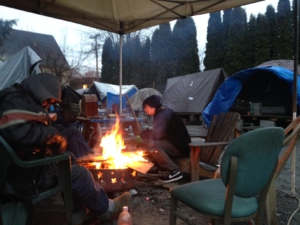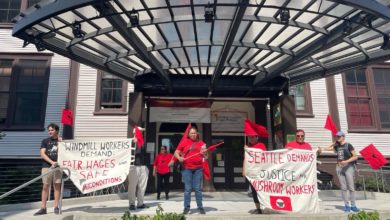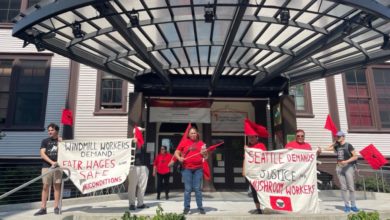
In 2015, the homelessness crisis in Seattle was declared by Mayor Ed Murray to have reached a “state of emergency” severe enough to prompt him to request support from the federal government. Two years later, homelessness in the Emerald City is still on the rise as rents across the city and nearby towns continue to soar.
The cost of rent in Seattle and the surrounding King County area has exploded in recent years. While luxury condominiums have never been more plentiful, affordable housing that is accessible to working people is difficult to find. According to data compiled by the real estate website Zillow, the average cost of renting a home in King County has risen approximately $800 since September of 2012. That is an average increase of 68 percent in less than five years.
The rapid rise in the cost of living in Seattle has forced many workers to move further and further away from the city in search of affordable rent. As workers commute from greater distances away, public transportation becomes less practical, forcing many to add the cost of a vehicle to their necessary expenses. In Washington state, that also means mandatory insurance coverage- and more expenses. When these are added to the ordinary expenses of maintenance and licensing it can become an unsustainable burden for many. This is particularly true of retail and service industry workers, who are routinely required to work irregular part-time hours that make reliance on public transit impractical.
The $15.00 minimum wage in the cities of Seattle and SeaTac has been a much needed relief for many working class people suffering as a result of the high cost of housing. While the hard-won increase in the minimum wage has improved material conditions for many in the Seattle area, the astronomical increase in the cost of housing has outstripped those gains and left even more people without the ability to provide the necessities of life for themselves or their families.
A recent study published by researchers at Zillow finds a strong causal relationship between rising rents in cities such as Seattle, and the rising numbers of homeless people living there.
The study combines HUD counts of homeless populations in major cities across the country, controlling for factors which tend to leave the true number of homeless people underrepresented in the HUD figures, estimating a homeless population in Seattle of 10,700. The Zillow analysis indicates that an additional 1,540 people remain uncounted, bringing the estimated total homeless population to 12,240 in 2016.
Based on the rate of increase in both rent cost and the resulting homeless population, Zillow estimates that an additional increase of 10 percent in the average rent will push a further 523 Seattleites into homelessness by the end of 2017. Given the increases seen in previous years, this is a conservative estimate.
The One Night Count, which is conducted annually by The Seattle/King County Coalition on Homelessness, found that in 2016 an estimated 4,500 people were sheltering outside, whereas only 3,200 had found a place in an overnight shelter and fewer than 3,000 were in any kind of transitional housing program.
Mainstream commentary on this crisis has focused on the the failure of “the market” to provide affordable housing in the short term, while stressing that this situation is eventually due for a “correction.” This truncated narrative fails to address the fact that new luxury apartment and condominium complexes are being built across the city. Their construction has increased unbelievably since 2015, with approximately 10,000 new units being added in 2017 alone. And yet, in spite of the astronomical increase in available housing, homelessness continues to grow apace with the cost of rent. In contrast to the conventional narrative that an increase in the availability of luxury housing will drive down the cost of housing across the board, the evidence has shown just the opposite. The average cost of rent continues to rise, and as long as there is more money to be made from trendy new condos than from affordable family housing we cannot expect that trend to reverse itself.
So long as the needs of the people are met on the basis of capitalist production there will always be those who are left out in the cold. Only by moving past capitalism and embracing socialism can we begin to meet the housing needs of all people, rather than catering to the greed of a few at the expense of the rest.






